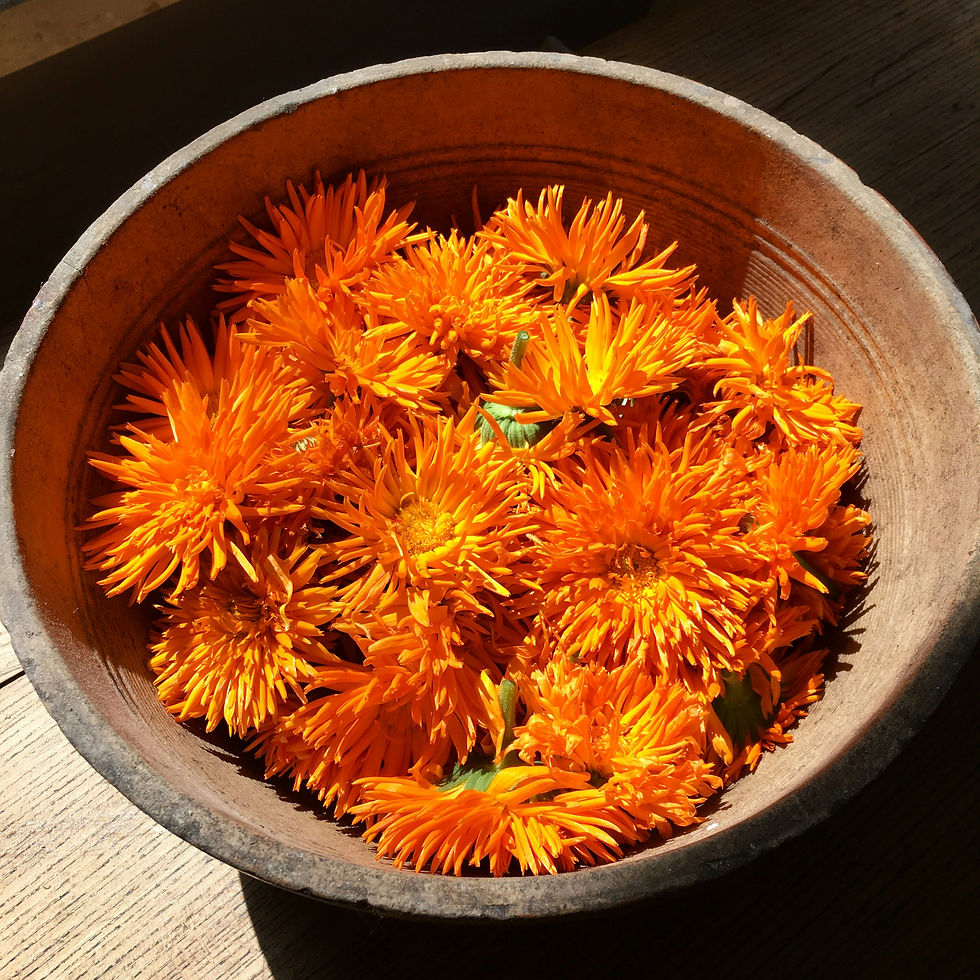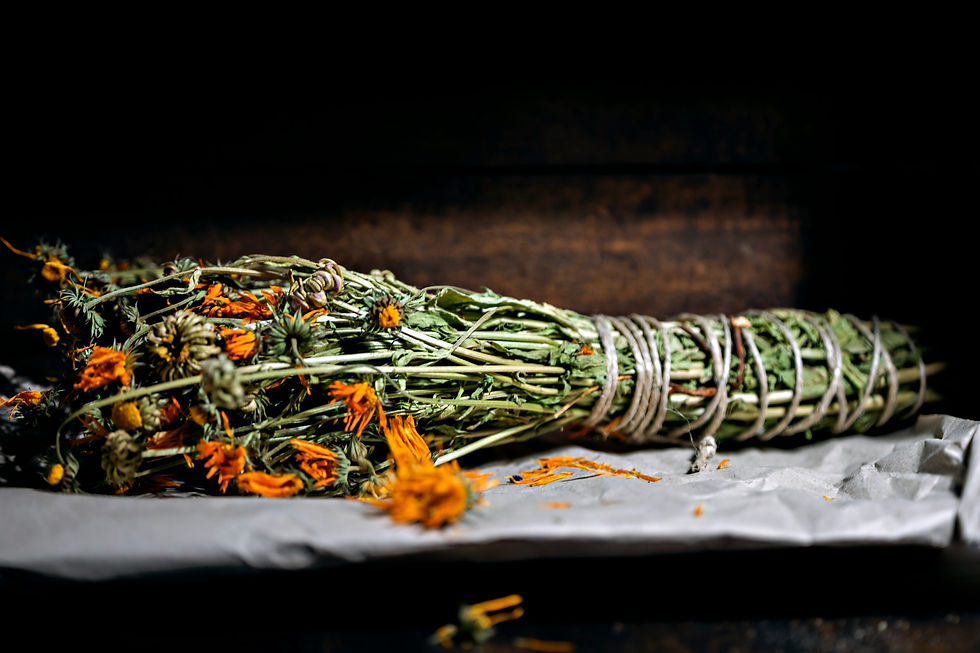A Look Into Our Herbal Apothecary: Calendula
- Neytiri Nayeli

- May 17
- 1 min read

Calendula should is a staple herb in our apothecary because of it's versatile and almost universal medicinal properties. It belongs to the Aster/Daisy family and packs a powerful medicinal punch! There are different species of Calendula, some more yellow- some more orange. Some more daisy-like, and some remind me of a mini lions mane like the ones photographed here!

Medicinal Properties:
Anti-viral
Anti-fungal
Anti-bacterial
Anti-microbial
Anti-Inflammatory
Analgesic
Antiseptic
Immuno-stimulant
Uses and Popular Remedies:
-Use in a tea, infused oil, salve, compress, or poultice
-Flowers can be eaten fresh and raw (but are bitter to taste), or dehydrated for seasoning and tea
Calendula leaves and flowers are most popular for what they can do topically on our skin!
-Soothes the skin
-Sunburn
-Cuts, bruises, wounds, lacerations,
-Rashes, Eczema
-Herpes, Chicken Pox, Cold Sores, Ringworm, Thrush, Athletes Foot,
-Diaper rash
-Bug bites, skin irritations, scratches, cuts,
-Inflammation
Calendula serves as a staple in natural skincare products
-Anti-aging
-Acne
-Collagen production AND Collagen protection
-Skin Brightening
Soothe muscle related pains such as menstrual cramps, muscle spasms, abdominal cramping, and body aches by drinking calendula tea.
Calendula serves some internal purposes as well!
-Heal hemorrhoids and stomach ulcers
-Immune system support
-Lymphatic system support
-Helps the body fight cancer
-IBS and other stomach/gastro-intestinal issues
Recommended Methods of Use:
-Tea
-Tincture
-Salve
-Cream
-Extract
Warnings:
Do not use if you are allergic to flowers in the Aster/Daisy family





Comments